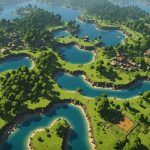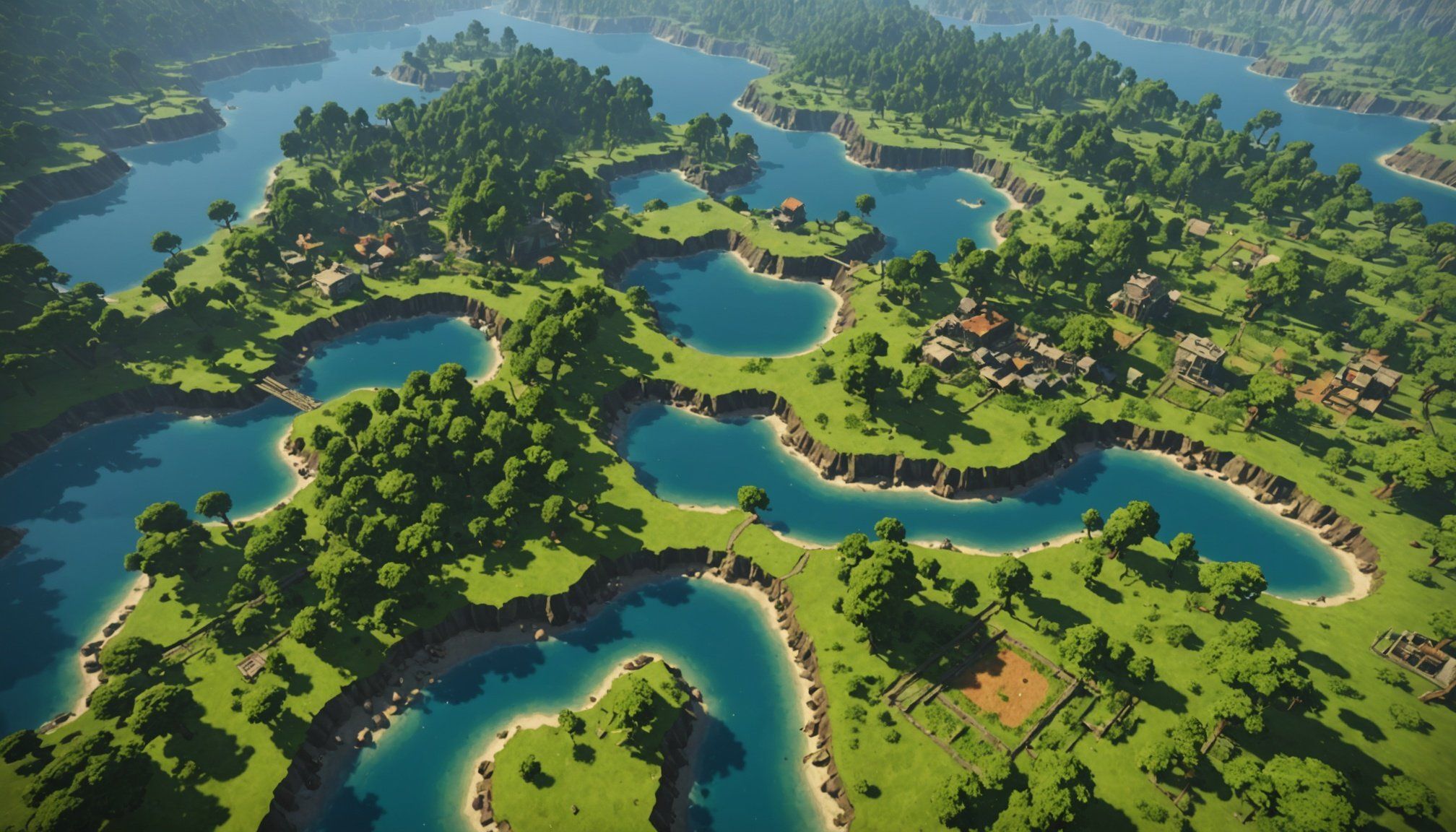Understanding Procedural Generation
Procedural generation is at the heart of innovative game design. It refers to the algorithmic creation of content, generating levels, maps, and features autonomously. This approach allows for unique, dynamic environments, enhancing replayability and diversity. Unlike handcrafted designs, procedural elements evolve, offering spontaneous gameplay opportunities each time a user enters the game world.
The concept has seen significant evolution. Originally, procedural generation was employed as a space-saving tactic in early gaming due to hardware limitations. As technology advanced, its application broadened to include complex algorithms capable of generating highly detailed landscapes and content. Today, it is vital to the gaming experience, especially in survival games, where the environment’s unpredictability can determine success or failure.
This might interest you : Immersive Ecosystem Adventures: Harnessing Live Biome Data for Next-Level Wildlife Simulations in Gaming
In survival games, procedural generation’s unpredictability plays a crucial role. It challenges players to adapt continuously and rethink strategies, thus enhancing engagement. Randomized resources and terrains compel players to explore, experiment, and survive in ever-changing conditions. The ability to craft endless worlds keeps gameplay fresh and exciting, ensuring sustained player interest. Advances in this area continue to push boundaries, laying a foundation for immersive environments that captivate and challenge players.
Examples of Procedural Generation in Survival Games
Procedural generation is profoundly implemented in popular survival games like Minecraft, No Man’s Sky, and ARK: Survival Evolved. These games exemplify varying approaches to generating expansive, immersive worlds that captivate players.
Also to discover : Revolutionizing RPG Character Expressions: Harnessing Machine Learning for Developers
Case Study: Minecraft
In Minecraft, procedural generation is pivotal in crafting a unique world each time a new game is initiated. The terrain, from forests to rivers and mountains, is algorithmically designed, providing endless exploration possibilities. These generated landscapes are integral to the game’s replayability, enticing players to create and shape their universes repeatedly.
Case Study: No Man’s Sky
No Man’s Sky employs procedural generation on a galactic scale. Each planet’s biodiversity and ecosystems are developed through complex algorithms, incorporating countless variables to produce unpredictable and diverse celestial environments. This remarkable breadth and depth in environmental variety keep players curious and engaged as they journey across the universe.
Case Study: ARK: Survival Evolved
In ARK: Survival Evolved, procedural terrain and resource management are central to its challenge. The game offers unpredictability in resource availability and ecosystem hazards, forcing players to continuously strategise and adapt. This approach enriches the survival experience, blending thrill with a survival-of-the-fittest atmosphere that keeps community feedback consistently positive.
Gameplay Implications of Procedural Generation
Procedural generation significantly affects the gameplay experience, shaping how players engage and strategize. This approach introduces a level of randomness, which plays a vital role in game dynamics by ensuring every session offers a new challenge. In survival games, the unpredictable nature of resources and terrains compels players to continuously adapt their strategies, pushing them to think on their feet and develop creative solutions to emerge victorious.
The incorporation of randomness doesn’t just enhance challenge; it refines the exploration aspect of gaming. Players are encouraged to explore more thoroughly, as they can never be entirely certain of what lies ahead. This unpredictability fosters a sense of adventure and curiosity, enticing players to delve deeper into their virtual worlds.
Balancing challenge and exploration is crucial for maintaining engaging player experiences. While embracing randomness, it’s important not to overwhelm players with impossibly difficult scenarios. Game developers often utilize algorithms to calibrate this balance, ensuring that the game is neither too predictable nor excessively challenging. A perfect blend keeps players hooked, appealing to both their survival instincts and their desire for exploration.
Visuals and Comparisons of Procedural Generation Techniques
Understanding the visual outcomes of procedural generation is essential for evaluating its impact on gameplay. Graphics play a crucial role in player engagement and determine how immersive a game can be. Visuals generated through algorithms can transform basic terrains into stunning landscapes that captivate players, enhancing their interaction with the virtual world.
Comparative Analysis of Algorithms Used
Different games employ distinct techniques to create their procedural content. Algorithms vary in complexity and output, each offering unique benefits:
- Simple Randomness: Generates diverse outcomes with minimal computational demand, often used in indie games.
- Perlin Noise: Creates more natural-looking terrains by smoothing transitions, widely used in Minecraft.
- L-Systems: Simulates organic growth patterns, ideal for generating believable flora and ecosystems.
Infographics Showing Generation Processes in Action
Infographics can successfully depict the behind-the-scenes processes of procedural generation. These visual guides offer insights into how specific algorithms function and their resulting effects on game worlds. By engaging with these visualizations, developers can comprehend the benefits and limitations of varying techniques, fostering innovative approaches in game development. This knowledge is vital for advancing creative design and ensuring a visually appealing experience for players.
Future Trends in Procedural Generation for Survival Games
The future trends of procedural generation in survival games promise to push boundaries further, driven by innovation and technological advances. Emerging technologies, such as machine learning and AI, are poised to redefine how game worlds are generated. These technologies could create even more complex and adaptive environments by learning from player interactions and preferences, tailoring experiences with increasing precision.
Player feedback plays a significant role in shaping future game development. Community-driven content is becoming more prevalent, allowing players to actively participate in the game’s evolution. Developers can utilize feedback to refine procedural algorithms, resulting in improved realism and immersive experiences. This feedback loop enhances the value of procedural generation by aligning it more closely with player expectations and desires.
In evolving survival games, we anticipate a focus on environmental realism and player immersion. As games strive for more life-like experiences, procedural generation will rely on increasingly sophisticated algorithms to craft believable ecosystems. Imagine a survival game where every resource, animal behaviour, and weather pattern feels authentic and responds dynamically to player actions.
To stay ahead, developers should watch trends in procedural generation techniques. Emphasizing realism and incorporating player insights are essential for advancing survival game experiences.











